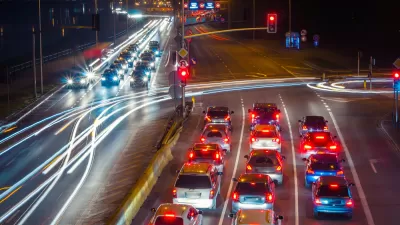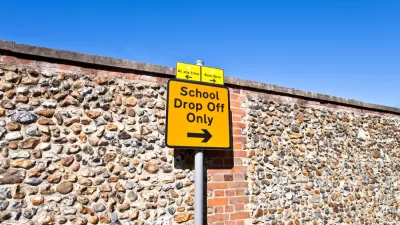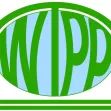Transport Planning

Faulty Assumptions in the TTI Urban Mobility Report
The annual Urban Mobility Report (UMR), published by Texas Transportation Institute (TTI), should come with a warning label.

Peak Car Revisited
U.S. vehicle travel increased 3.2% (8.6 billion vehicle miles) in total and 2.0% per capita between Junes 2015 and 2016. That is a new peak in total VMT, but a 2.75% reduction in per capita VMT. Will these growth rates continue into the future?

New Mapping Tools Shows How to Access Activities by Various Modes
The Urban Accessibility Explorer is an easy-to-use mapping system that measures the number of activities that can be reached by residents of specified neighborhoods within a given amount of travel time, by a particular mode and time of day.

Introducing the Litman 'Chauffeuring Burden Index'
A significant portion of vehicle travel consists of chauffeuring: additional travel to transport a non-driver. The new Chauffeuring Burden Index calculates its direct and indirect costs. Why do these costs receive such little attention in planning?
Planners are Futurists With a Practical Bent
Planners are futurists, but with less pretension and jargon. Our work requires predicting how current trends are likely to affect future conditions and activities, and how communities should prepare. For example, let's predict self-driving cars.
Measuring Transport System Efficiency
There are various ways to define transport efficiency which can lead to very different conclusions as to what transport policies and projects are best overall. Conventional planning tends to evaluate transport system performance based on mobility, which assumes that faster travel is always better. A new planning paradigm evaluates transport system performance based on accessibility (people's ability to access services and activities) which leads to very different definitions of efficiency and very different conclusions about how to improve transport systems.
Toward Comprehensive and Multi-Modal Performance Evaluation
One of planners’ most important jobs is to help develop the indicators and frameworks use to define problems and evaluate potential solution. Often, a particular solution will seem cost effective and beneficial when evaluated one way, and wasteful and undesirable if evaluated another. It is important that we help develop comprehensive evaluation frameworks that effectively inform decisions.
Share Your Ideas for Evaluating Transport System Performance
Moving Ahead for Progress in the 21st Century (MAP-21), the new U.S. federal transportation law, has the following main goals: Safety Infrastructure condition Congestion reduction System reliability Freight movement and economic vitality Environmental sustainability Reduced project delivery delays
Study Says Induced Traffic Effect Too Often Ignored
Despite many studies confirming the effect of induced traffic, the effect is often ignored in the transport models used for project appraisal, says a team of Scandanavian researchers creating an extreme bias in the assessment of new projects.
Avoiding Undesirable Self-Fulfilling Prophecies
Planners strive to anticipate future needs, which sometimes creates self-fulfilling prophecies: by preparing for a situation we help cause it. This is particularly true of automobile dependency. Planning decisions intended to accommodate automobile.
Threats of Gridlock are Greatly Exaggerated
A few weeks ago the Texas Transportation Institute (TTI) released its latest Urban Mobility Report, and yesterday INRIX released its National Traffic Scorecard 2010 Annual Report. Both paint a grim picture of roadway conditions. “America is back on the road to gridlock,” warns INRIX.
Multi-Modal Level-Of-Service Goes Mainstream: Chickens Can Finally Cross Roads
Why didn’t the chicken cross the road? Because pedestrian Level-Of-Service was below “C”.
Changing Travel Demands: Implications for Planning
The graph below shows the most recent USDOT vehicle-travel data covering the last 25 years. Although vehicle-miles of travel (VMT) grew steadily during most of the Twentieth Century, in recent years the growth rate stopped and even declined a little. It is now about 10% below where it would have been had past trends continued.
Valuing The Precious Hours Of Our Lives
Time is a limited and valuable resource. As much as possible, people should spend the precious hours of their lives in the most satisfying and productive possible ways. This has important implications for transportation planning, since most people spend a significant amount of time in transport, and travel time savings are often the greatest projected benefits of transport projects such as roadway and transit service improvements.
Universal Design - Accommodating Everybody
I spent the last week teaching a professional development course for young planners in Buenos Aries, Argentina. It’s been a wonderful experience – my students are smart and enthusiastic, and Buenos Aries is a vibrant city with old-world charm. The buildings, plazas and old statues are beautiful and dignified, although a little frayed around the edges.
Accessibility-Based Planning
Should society encourage parents to drive children to school rather than walk or bicycle? Should our transportation policies favor driving over walking, cycling, ridesharing, public transit and telecommuting? Probably not. There is no logical reason to favor automobile travel over other forms of accessibility, and there are lots of good reasons to favor efficient modes, so for example, schools spend at least as much to accommodate a walking or cycling trip as an automobile trip, and transportation agencies and employers spend at least as much to improve ridesharing and public transit commuting as automobile commuting.
Travel Demands Are A-Changing: So Should Our Spending
Politicians and planners be warned: you will now be judged according to your ability to improve walking, cycling and public transit services.
City of Costa Mesa
Licking County
Barrett Planning Group LLC
HUD's Office of Policy Development and Research
Mpact Transit + Community
HUD's Office of Policy Development and Research
Tufts University, Department of Urban and Environmental Policy & Planning
City of Universal City TX
ULI Northwest Arkansas
Urban Design for Planners 1: Software Tools
This six-course series explores essential urban design concepts using open source software and equips planners with the tools they need to participate fully in the urban design process.
Planning for Universal Design
Learn the tools for implementing Universal Design in planning regulations.
































